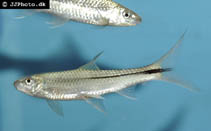http://www.fishbase.org/Summary/speciesSummary.php?genusname=Lobocheilos&speciesname=rhabdoura ---> http://52.67.158.155/Summary/speciesSummary.php?genusname=Lobocheilos&speciesname=rhabdoura
http://52.67.158.155/Summary/speciesSummary.php?genusname=Lobocheilos&speciesname=rhabdoura ---> https://fishbase.net.br/Summary/speciesSummary.php?genusname=Lobocheilos&speciesname=rhabdoura
https://fishbase.net.br/Summary/speciesSummary.php?genusname=Lobocheilos&speciesname=rhabdoura ---> https://fishbase.net.br/summary/Lobocheilos-rhabdoura.html
Lobocheilos rhabdoura

You can
sponsor
this page
Common name (e.g. trout)
Genus + Species (e.g. Gadus morhua)
-

-
About this page
-
Languages
-
User feedbacks
-
Citation
-
Uploads
-
Related species
-


 Upload your
photos
and
videos
Upload your
photos
and
videos
Pictures
|
Google image
 Lobocheilos rhabdoura
Lobocheilos rhabdoura
Picture by
JJPhoto
Teleostei (teleosts) >
Cypriniformes
(Carps) >
Cyprinidae
(Minnows or carps) > Labeoninae
Etymology:
Lobocheilos:
Latin, lobus = lobe + Greek, cheilos = lip (Ref.
45335
)
.
More on author:
Fowler
.
Environment: milieu / climate zone / depth range / distribution range
Ecology
Freshwater; benthopelagic; pH range: 6.5 - 7.5; dH range: 10 - 18. Tropical; 18°C - 26°C (Ref.
13614
)
Asia: Chao Phraya, Meklong and Mekong basins, and peninsular Thailand.
Size / Weight / Age
Maturity: L
m
?
range ? - ? cm
Max length : 22.0 cm SL male/unsexed; (Ref.
43281
)
Has a single mid-lateral stripe that darkens on caudal peduncle and ends in a large black round or oval spot at base of caudal fin; 10 predorsal scales; gill rakers 5+28 on anterior side of first arch (Ref.
12693
). Relatively slender body, depth 3.7-4.6 times in SL; relatively wide mouth, occupying whole width of head; large tubercles on snout in large individuals (Ref.
43281
).
Found at bottom depths in large and medium-sized streams (Ref.
12693
). Usually inhabits streams with relatively swift current, rapids (Ref.
43281
). Enters flooded fields (Ref.
12975
). Feeds on periphyton and phytoplankton. Probably spawns at the onset of the rainy season. Used to make nook mama.
Life cycle and mating behavior
Maturity
|
Reproduction
|
Spawning
|
Eggs
|
Fecundity
|
Larvae
Rainboth, W.J.
, 1996. Fishes of the Cambodian Mekong. FAO species identification field guide for fishery purposes. FAO, Rome, 265 p. (Ref.
12693
)
IUCN Red List Status (Ref.
130435
)
Least Concern (LC)
; Date assessed:
30 March 2011
CITES
Not Evaluated
Not Evaluated
Threat to humans
Harmless
Human uses
FAO - Publication:
search
|
FishSource
|
More information
Countries
FAO areas
Ecosystems
Occurrences
Introductions
Stocks
Ecology
Diet
Food items
Food consumption
Ration
Common names
Synonyms
Metabolism
Predators
Ecotoxicology
Reproduction
Maturity
Spawning
Spawning aggregation
Fecundity
Eggs
Egg development
Age/Size
Growth
Length-weight
Length-length
Length-frequencies
Morphometrics
Morphology
Larvae
Larval dynamics
Recruitment
Abundance
BRUVS
References
Aquaculture
Aquaculture profile
Strains
Genetics
Electrophoreses
Heritability
Diseases
Processing
Nutrients
Mass conversion
Collaborators
Pictures
Stamps, Coins Misc.
Sounds
Ciguatera
Speed
Swim. type
Gill area
Otoliths
Brains
Vision
Tools
E-book
|
Field guide
|
Length-frequency wizard
|
Life-history tool
|
Point map
|
Classification Tree
|
Catch-MSY
|
Special reports
Check for Aquarium maintenance
|
Check for Species Fact Sheets
|
Check for Aquaculture Fact Sheets
Download XML
Summary page
|
Point data
|
Common names
|
Photos
Internet sources
AFORO (otoliths) |
Aquatic Commons
|
BHL
|
Cloffa
|
BOLDSystems
|
Websites from users
|
Check FishWatcher
|
CISTI
|
Catalog of Fishes
:
genus
,
species
|
DiscoverLife
|
ECOTOX
| FAO - Publication:
search
|
Faunafri
| Fishipedia |
Fishtrace
| GenBank:
genome
,
nucleotide
|
GloBI
|
Google Books
|
Google Scholar
|
Google
| IGFA World Record |
MitoFish
|
Otolith Atlas of Taiwan Fishes
|
PubMed
| Reef Life Survey | Socotra Atlas |
Tree of Life
| Wikipedia:
Go
,
Search
| World Records Freshwater Fishing |
Zoological Record
Estimates based on models
Phylogenetic diversity index (Ref.
82804
): PD
50
= 0.5000 [Uniqueness, from 0.5 = low to 2.0 = high].
Bayesian length-weight: a=0.00724 (0.00339 - 0.01546), b=3.06 (2.88 - 3.24), in cm total length, based on LWR estimates for this (Sub)family-body shape (Ref.
93245
).
Trophic level (Ref.
69278
): 2.0 ±0.00 se; based on food items.
Resilience (Ref.
120179
): Medium, minimum population doubling time 1.4 - 4.4 years (Preliminary K or Fecundity.).
Fishing Vulnerability (Ref.
59153
): Low vulnerability (17 of 100).
Back to Search
Random Species
Back to Top
Accessed through:
Not available
FishBase mirror site :
Laguna, Philippines
Page last modified by :
mrius-barile
|